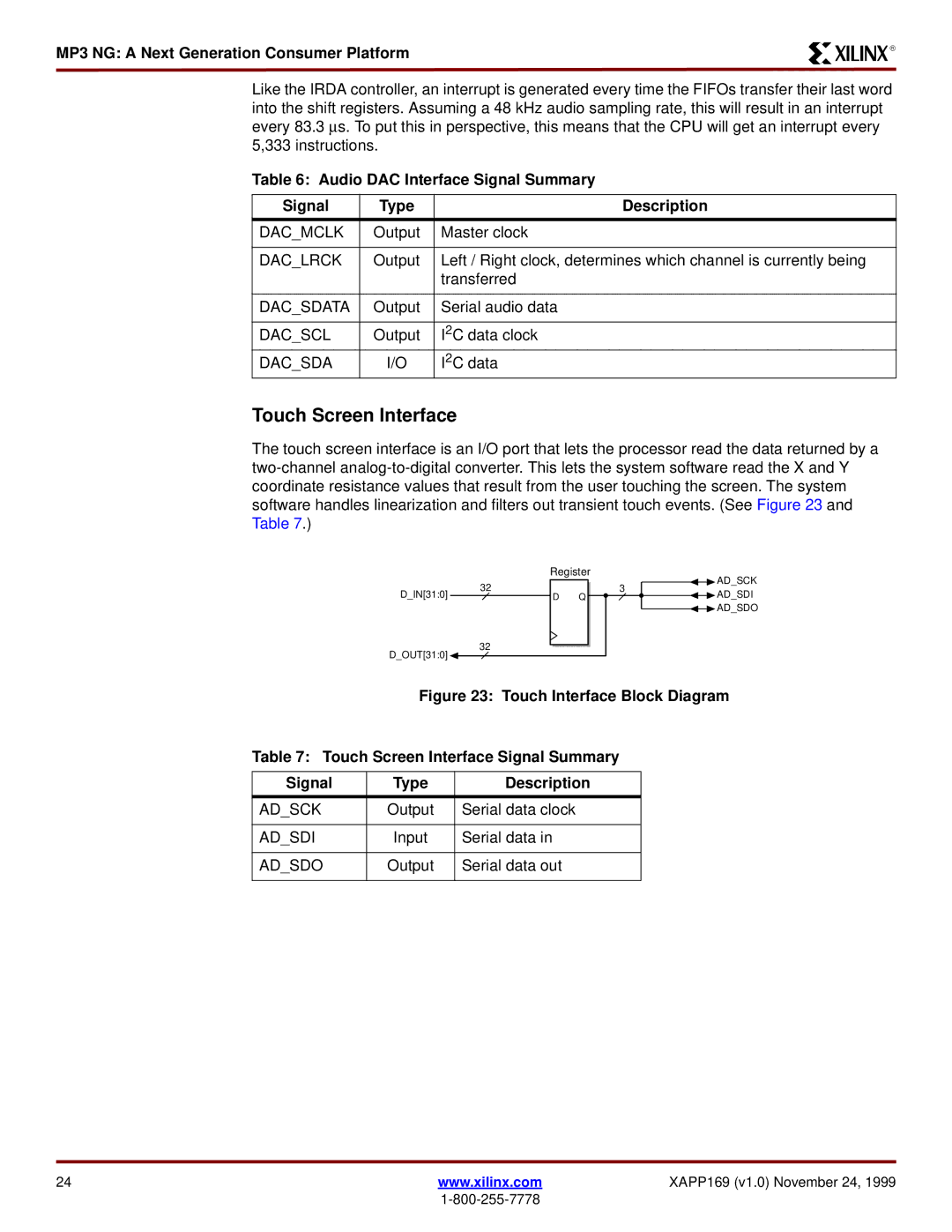XAPP169 specifications
Xilinx XAPP169 is a pioneering application note that delves into the design and implementation of high-performance digital signal processing (DSP) systems. It serves as a reference guide for engineers and designers looking to leverage Xilinx Field Programmable Gate Arrays (FPGAs) for sophisticated DSP applications. The document provides a comprehensive overview of the techniques and methodologies necessary to harness the power and flexibility of FPGA technology in DSP design.One of the main features of XAPP169 is its focus on the integration of various DSP functions, including filtering, modulation, and Fourier transforms. By utilizing the inherent parallelism of FPGAs, designers can achieve significant performance enhancements compared to traditional DSP implementations. This parallel processing capability allows for real-time processing of high-bandwidth signals, making XAPP169 ideal for applications such as telecommunications, aerospace, and medical imaging.
The application note emphasizes the use of Xilinx’s advanced tools and libraries, such as the Xilinx System Generator for DSP and the Xilinx Vivado Design Suite. These tools facilitate the modeling, simulation, and synthesis of DSP algorithms tailored to specific requirements, enabling a rapid development cycle. By providing pre-optimized building blocks and IP cores, XAPP169 streamlines the design process, reducing time-to-market for new products and innovations.
Additionally, XAPP169 highlights the ability to leverage high-speed serial transceivers present in Xilinx FPGAs. These transceivers enable reliable transmission of data across long distances with minimized latency and optimized bandwidth utilization. The application note outlines various techniques for managing signal integrity and maximizing throughput, ensuring that designs can meet the stringent requirements of modern DSP applications.
Another characteristic of XAPP169 is its attention to resource utilization and optimization strategies. The document discusses how to balance performance with area and power consumption, which is crucial in embedded applications where space and power are at a premium. By employing advanced synthesis strategies and leveraging the capabilities of Xilinx’s architecture, designers can create efficient and scalable DSP systems.
In summary, Xilinx XAPP169 serves as an invaluable resource for engineers seeking to harness the capabilities of FPGAs in DSP applications. With its focus on high-performance design, integration of advanced tools, and optimization strategies, it opens up new possibilities for innovation in various fields where digital signal processing is essential.

